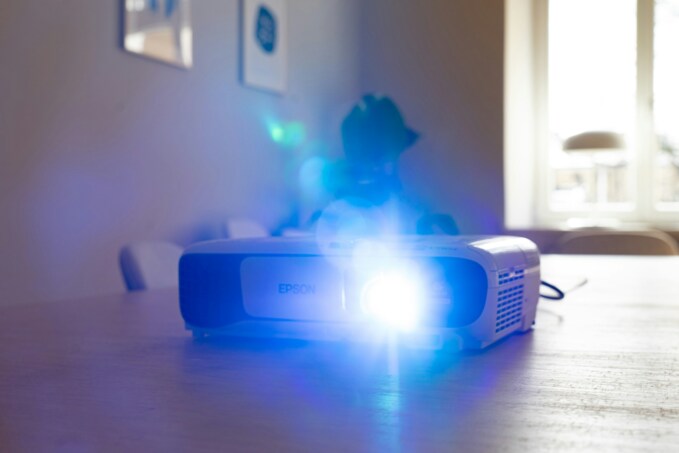Rück projection is a special technique in which the image is projected by a projector onto the back of a translucent screen and is visible to the audience from the front.
This technique requires certain prerequisites: a projector suitable for rear projection that provides sufficient light intensity and a special screen that distributes the light evenly and reproduces it clearly on the other side.
Requirements for the projection screen
A special projection screen is required for room projection. Unlike standard screens, which simply reflect the light, a projection screen is made of a special material that allows light to pass through in a controlled manner. This screen ensures that the image not only remains bright and sharp, but is also evenly distributed. At the same time, it minimizes disturbing influences such as reflections and ambient light. Thanks to its specific properties, it reproduces the projected image clearly and with high contrast on the front, without distortion or loss of detail.
Choosing the right projector for room projection
There are a number of requirements that need to be met in order for room projection to work. One key aspect is the projector, which must be suitable for this method. Projectors suitable for rear projection are usually characterized by a high luminous intensity, which is measured in lumens. This brightness is important so that the projected image retains its luminosity even when it penetrates the screen and is clearly visible to the audience.
Not every projector is suitable for rück projection. Short-throw projectors are particularly practical in confined spaces, as they can project a large image from a short distance. Devices with at least 3,000 lumens brightness are recommended for bright environments. Also check whether the projector supports R&R projection and has suitable connections.
